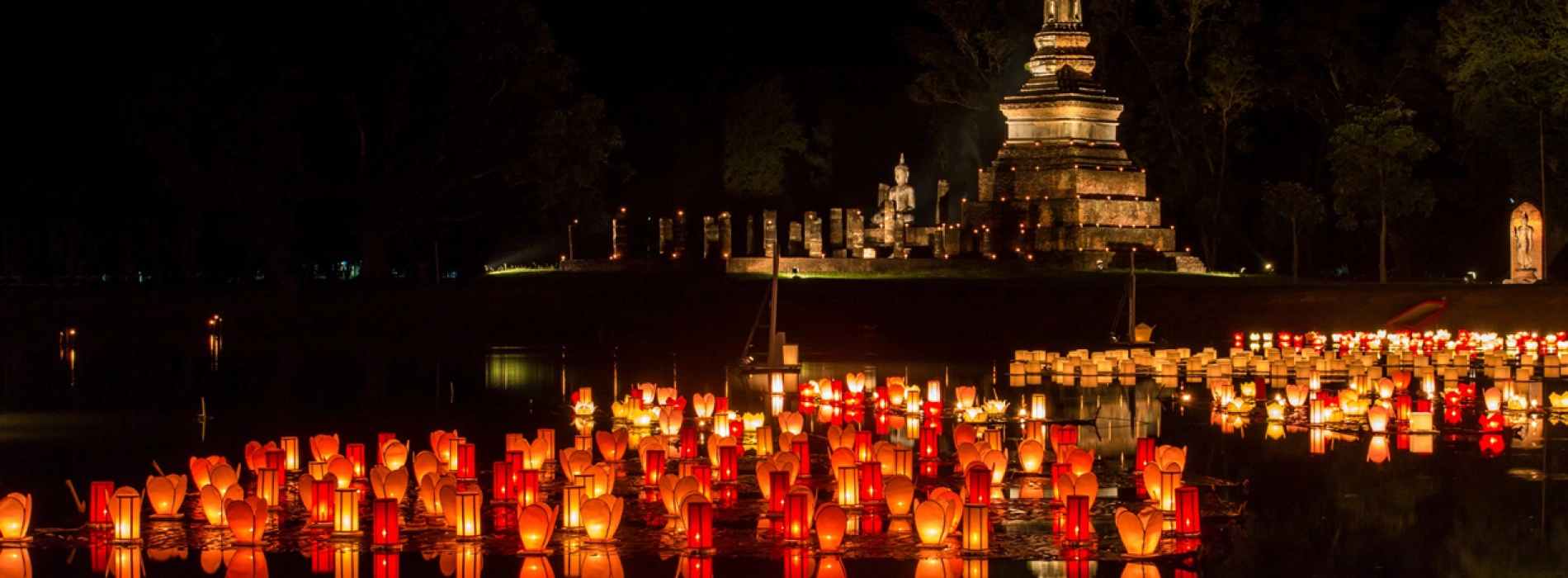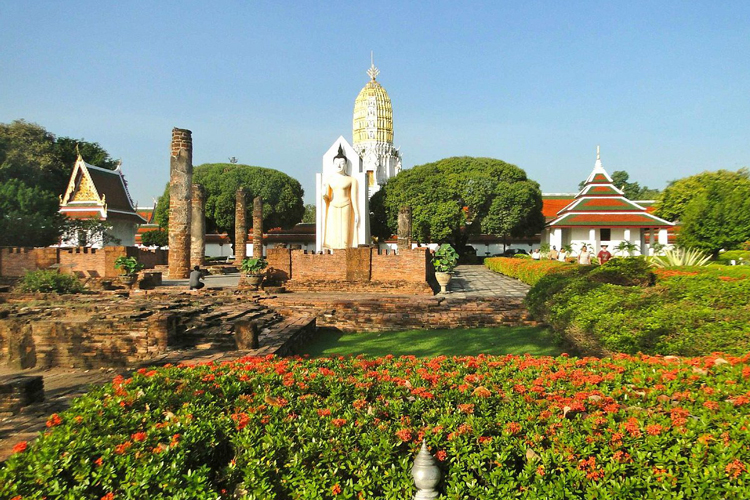Phitsanulok

Thailand's lower northern province of Phitsanulok is a popular travel destination due to its rich cultural and historical legacy. Situated around 377 kilometers north of Bangkok, the province was the seat of the Sukhothai Kingdom, which adds to its historical significance in Thailand. The capital city, Phitsanulok, is home to a diversified economy that includes manufacturing, trade, and agriculture. It is a major center for transportation and commercial activity. In addition to historical sites, Phitsanulok has scenic natural features. An airport, a railway station, and a well-established road network all contribute to the province's accessibility. Gourmets may enjoy regional specialties, such as those from northern Thailand. The celebrations of Phitsanulok enhance the cultural experience even further, making it an alluring location that skillfully combines history and contemporary.

A glimpse into Thailand's religious and cultural heritage
The centuries-long rich history of Phitsanulok adds to its cultural prominence in Thailand. The region was formerly a component of the Sukhothai Kingdom, one of the first Thai kingdoms that was crucial to the development and stabilization of Thai identity and culture. Phitsanulok was the capital of Sukhothai, a thriving monarchy in the 13th and 14th centuries.
Wat Yai, also known as Wat Phra Sri Rattana Mahathat, is one of the most important historical landmarks in Phitsanulok. The magnificent and highly venerated Phra Buddha Chinnarat is the temple's most famous possession. The Sukhothai era saw the construction of the temple complex, which has since seen several additions and modifications.
Apart from its connection to the Sukhothai Kingdom, Phitsanulok has also been involved in contemporary Thai history. In Thai history, King Naresuan the Great, who is highly regarded, was born in Phitsanulok in 1555. His exploits against the Burmese are well-known, and Thailand honors his memory every year with the King Naresuan Festival.
Even after the Sukhothai Kingdom was overthrown, Phitsanulok remained a significant regional hub under the Ayutthaya Kingdom. The province has seen many historical occurrences, including wars and power struggles typical of many eras in Thai history.
Phitsanulok has flourished in the modern period, combining both modern development and ancient beauty to create a charming province. Its historical sites, which include museums and temples, serve as reminders of its rich cultural legacy. Because of this, historians and travelers interested in learning more about Thailand's fascinating past continue to go to Phitsanulok.

Phu Hin Rong Kla National Park - A heaven for nature enthusiasts
Phitsanulok, being located in the lower northern region of Thailand, experiences a tropical climate with distinct wet and dry seasons.
Dry Season (November to April): During this period, the weather is characterized by lower humidity, clear skies, and minimal rainfall. Daytime temperatures can range from warm to hot, with the peak of the heat usually occurring in March and April.
Hot Season (March to May): Temperatures during this period can be quite high, with daytime temperatures often exceeding 30 degrees Celsius and sometimes reaching into the mid-30s.
Wet Season (May to October): This period is characterized by higher humidity, increased cloud cover, and frequent rainfall. The heaviest rainfall typically occurs between June and September, with August being one of the wettest months.
Cool Season (November to February): While temperatures are cooler compared to the hot season, they are generally mild and comfortable. This season is considered the most pleasant time to visit, with cooler evenings and a more temperate climate during the day.

A pristine natural environment of Phu Soi Dao National Park
Best season to go: The chilly season, which runs from November to February, is without a doubt the greatest time of year to visit Phitsanulok. With its moderate temperatures and reduced humidity, this time of year provides tourists with a perfect climate. The pleasant weather makes touring and outdoor activities very pleasurable. Clear skies offer great visibility for seeing historical buildings, going on hikes in national parks, and taking in the breathtaking natural beauty of the area, which includes waterfalls. In addition, the chilly season offers tourists an opportunity to fully immerse themselves in the local way of life by coinciding with a number of festivals and events, including the well-known Loy Krathong celebration. The mild season, with its moderate daytime temperatures and colder evenings, is the best time to visit Phitsanulok for a fulfilling and comfortable stay.
To get to Phitsanulok, Thailand, you have several transportation options depending on your starting point:
By Air: Phitsanulok Airport (PHS) serves domestic flights from Bangkok. Several airlines operate daily flights between Bangkok and Phitsanulok, making it a convenient option for travelers who want to save time.
By Train: Phitsanulok is a major stop on the Northern Line of Thailand's railway network. You can take a train from Bangkok's Hua Lamphong Station to Phitsanulok Station. The journey takes around 5-6 hours depending on the train type.
By Bus: There are regular bus services from Bangkok's Northern Bus Terminal (Mo Chit) to Phitsanulok Bus Terminal. The journey takes around 5-6 hours, depending on traffic conditions and the type of bus.
By Car: If you prefer driving, you can rent a car and take Highway 1 (Phahonyothin Road) from Bangkok to Phitsanulok. The journey typically takes around 4-5 hours, depending on traffic and stops.
By Motorcycle: Similar to driving, you can also ride a motorcycle from Bangkok to Phitsanulok. However, this option requires experience in riding motorcycles and knowledge of Thai traffic rules.
Choose the option that best suits your preferences in terms of time, budget, and comfort. Each mode of transportation offers its own advantages and allows you to experience different aspects of the journey.